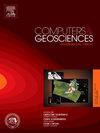结合深度学习和测井曲线形态改进中国松辽盆地三兆沙砾岩湖相页岩岩性预测
IF 4.2
2区 地球科学
Q1 COMPUTER SCIENCE, INTERDISCIPLINARY APPLICATIONS
引用次数: 0
摘要
准确识别页岩岩性对于确定湖相页岩油藏的碳氢潜力至关重要。岩石物理测井作为获取地下岩性信息的有效工具,提供了便捷可靠的岩性识别解决方案。深度学习技术能够适应地质统计中固有的非线性和非平稳性,在常规储层岩性预测中表现出独特的优势。然而,湖相页岩地层的岩性会发生快速的时空变化,使得岩性预测与常规储层相比更为复杂。本研究以三条嵯峨岩层中的青山口下统为研究对象,首次采用了深度残余收缩网络(DRSN)作为深度学习框架来预测湖相页岩层的岩性,DRSN以其能够处理复杂的非线性关系、通过残余连接和收缩机制减轻噪声数据的影响而著称。测井数据包括天然伽马射线(GR)、声波(AC)、深部调查双侧向电阻率测井(RD)、浅部调查双侧向电阻率测井(RS)和校正补偿中子测井(CNC),这些数据被用作模型的输入特征。结果表明,DRSN 模型预测湖相页岩地层岩性的准确率达到 76.3%。然而,DRSN 模型在捕捉岩性变化信息方面仍存在不足。为了提高该模型识别岩性变化界面的能力,本研究进一步明确引入了测井曲线形态特征(WLCM)作为附加特征,并建立了 DRSN 与 WLCM 相结合的识别方法。使用单独的测试数据集对 DRSN-WLCM 组合模型进行了验证,结果表明,使用五种测井属性和 AC 的导数作为输入,准确率提高了 85.5%。此外,该研究还揭示了三条嵯峨下部青山口岩层的岩性空间分布特征。该方法可广泛应用于湖相页岩地层及类似地层单元的岩性划分。本文章由计算机程序翻译,如有差异,请以英文原文为准。
Improving lithofacies prediction in lacustrine shale by combining deep learning and well log curve morphology in Sanzhao Sag, Songliao Basin, China
The accurate identification of shale lithofacies is crucial for characterizing the hydrocarbon potential of lacustrine shale oil reservoirs. Petrophysical logging, serving as an effective tool for acquiring subsurface lithofacies information, provides a convenient and reliable lithofacies identification solution. Deep learning technology, capable of adapting to the nonlinearity and non-stationarity inherent in geological statistics, exhibits unique advantages in conventional reservoir lithofacies prediction. However, the lithofacies of lacustrine shale formations undergo rapid spatial and temporal changes, rendering lithofacies prediction more complex compared to conventional reservoirs. In this study, the lower Qingshankou member in the Sanzhao Sag was selected as the research target, and the Deep Residual Shrinkage Network (DRSN), known for its ability to handle complex nonlinear relationships and mitigate the effects of noisy data through residual connections and shrinkage mechanisms, was employed as a deep learning framework for predicting lithofacies in lacustrine shale formations for the first time. Well logging data, including natural gamma ray (GR), acoustic (AC), deep investigate double lateral resistivity log (RD), shallow investigate double lateral resistivity log (RS), and corrected compensated neutron log (CNC), were used as input features for the model. The results indicate that the DRSN model achieves an accuracy of 76.3% in predicting lithofacies in lacustrine shale formations. However, the DRSN model still exhibits shortcomings in capturing lithofacies change information. To enhance the model's ability to identify lithofacies change interfaces, this study further explicitly introduces Well Logging Curve Morphological Features (WLCM) as additional features and establishes a recognition method combining DRSN with WLCM. The combined DRSN-WLCM model was validated using a separate test dataset, demonstrating an improved accuracy of 85.5%, using the five well logging attributes and the derivative of the AC as inputs. Furthermore, the study reveals the lithofacies spatial distribution characteristics of the lower Qingshankou member in the Sanzhao Sag. This method can be widely applied to lithofacies delineation in lacustrine shale formations and similar stratigraphic units.
求助全文
通过发布文献求助,成功后即可免费获取论文全文。
去求助
来源期刊

Computers & Geosciences
地学-地球科学综合
CiteScore
9.30
自引率
6.80%
发文量
164
审稿时长
3.4 months
期刊介绍:
Computers & Geosciences publishes high impact, original research at the interface between Computer Sciences and Geosciences. Publications should apply modern computer science paradigms, whether computational or informatics-based, to address problems in the geosciences.
 求助内容:
求助内容: 应助结果提醒方式:
应助结果提醒方式:


